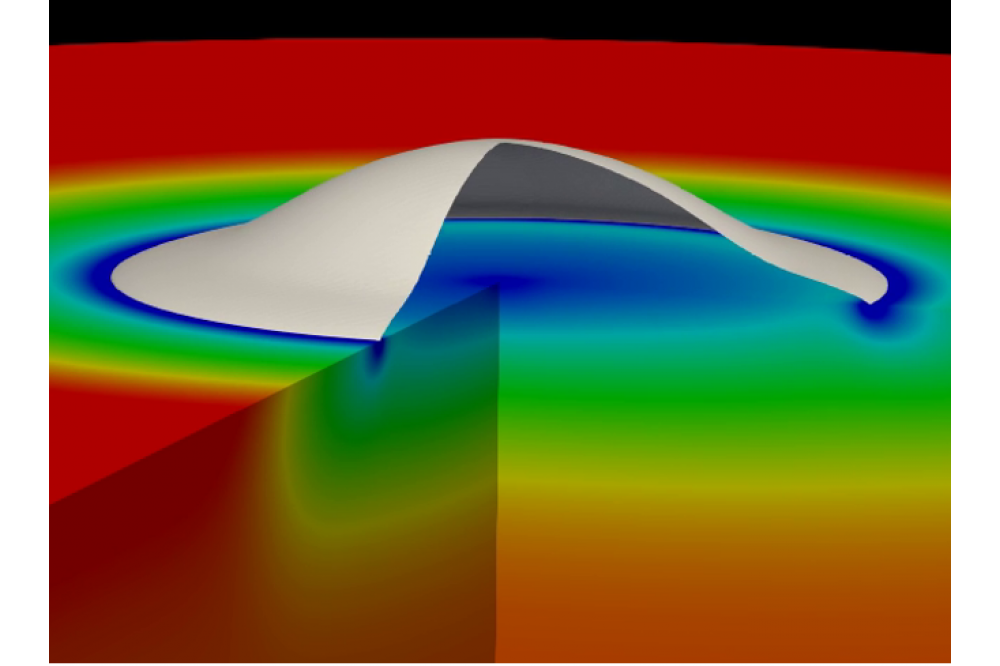Numerical Investigation of Drop Impact, Coalescence and Evaporation on Superheated Surfaces I
Introduction
Spray cooling is a promising technology to remove heat from a hot target. To contribute to a better understanding of the complex hydrodynamic and heat transfer mechanisms during spray cooling, the impact of a single drop and coalescing drops onto a superheated substrate are studied. Special consideration is given to the three-phase contact line, where solid, liquid and vapor meet. Accurate calculations of the hydrodynamics and heat transfer require large computational effort.
Methods
The governing equations of the numerical model describe the conservation of mass, momentum and energy for both compressible and incompressible fluid flow. Source terms account for the heat and mass transfer at the interface. The volume-of-fluid method is used to track the interface. The hydrodynamic and heat transport mechanisms in the vicinity of the three-phase contact line are solved within a micro region model. The results from the micro region model are implemented in the form of correlations in the overall numerical model.
Results
The compressible solver is used to study the single drop impact onto a superheated substrate at low and high ambient pressures. Studies with constant initial impact parameters and constant non-dimensional numbers over a wide range of parameters are performed. The incompressible solver is used to study the vertical coalescence of multiple drops impacting successively onto a superheated substrate. Numerical results are compared with experimental data. Furthermore, the influence of the drop frequency and of the substrate thickness on hydrodynamics and heat transfer is studied. Finally, a drop chain consisting of five drops is studied.
Discussion
The study of the single drop impact at high and low ambient pressures shows that a change in the pressure results in a change in the non-dimensional impact parameters, as well. For most cases, the change in the hydrodynamics and heat transport can be attributed to the change in non-dimensional numbers. For the case of the vertical coalescence, numerical predictions agree well with the experimental data. The study on the influence of the drop frequency shows that an impact of the second drop during the spreading phase of the initial drop enhances the overall heat transfer. Due to the rapid cooling of the thin substrate after the impingement of the initial drop, the heat flow during the impact of the second drop is lower for the case of the thin substrate than for the thick substrate. In upcoming studies, an extensive parameter study for the case of the vertical coalescence will be performed. Furthermore, the horizontal coalescence of two drops will be studied numerically.




